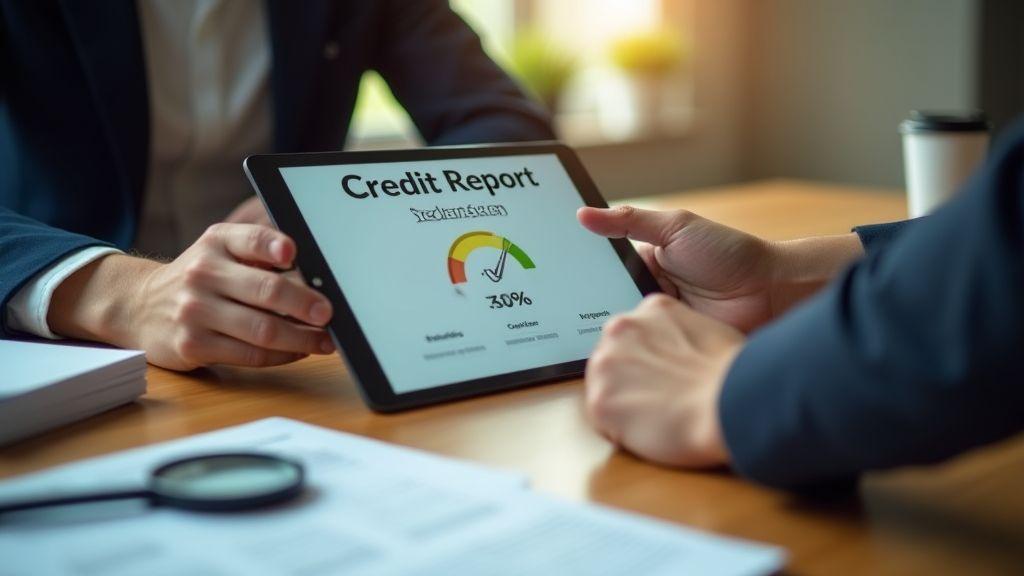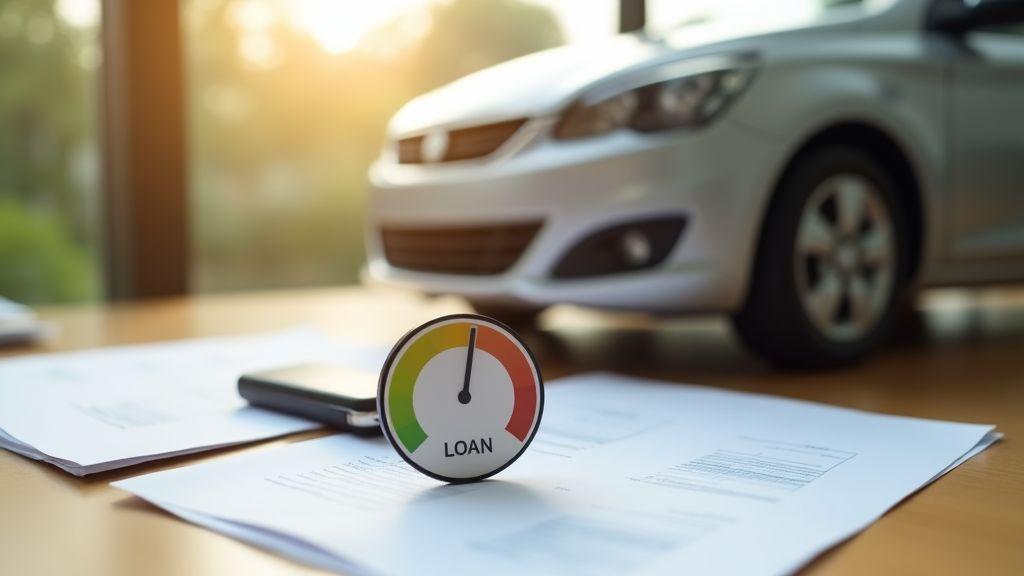How to Get Approved for a Car Loan with Bad Credit
How to Get Approved for a Car Loan with Bad Credit is your quick guide to getting a car when your score is low. You will learn what lenders check — credit score, income, and debt-to-income ratio — the approval steps, the key documents to bring, and where to shop for the best rates at banks, credit unions, and online lenders. Learn how to prequalify without harming your credit and fast ways to improve your odds with a larger down payment or a cosigner. Understand dealer choices including buy-here-pay-here, the risks of dealer financing, and how subprime loans and fees work. You’ll also get tactics to refinance after you rebuild, and steady habits to rebuild credit so you qualify for better financing next time. Track your score and time your next application for the best chance.
Key Takeaway
- Check your credit report and fix errors
- Save a down payment to lower loan costs
- Get preapproval so you know your budget
- Use a co-signer or try a credit union
- Compare lenders and read loan terms

What lenders check when you apply with bad credit
Lenders start with your credit score because it’s the quickest snapshot of how you’ve handled money. If your score is low, they look deeper at payment history, recent late payments, and any public records like collections or bankruptcy. A low score raises red flags, but it doesn’t shut the door — other factors can balance the risk. For a government overview of these lender criteria, see what lenders look for in loans.
Next, lenders inspect your income and employment history to see if you can pay. Stable pay and steady work make you a safer bet. They also check your debt-to-income (DTI) ratio — how much of your pay already goes to bills. High DTI means less room for a car payment, so you may face higher rates or required down payments.
Finally, lenders consider the vehicle itself and the loan terms. A newer, cheaper car reduces risk; a high-mileage or expensive car raises it. They may require a larger down payment, a shorter loan term, or a co-signer to approve you.
Credit score, income, and debt-to-income ratio you should know
Your credit score is the headline. Scores under about 620 are often labeled “bad” by many lenders, but each lender has its own cutoff. Even small positive moves — like paying down a credit card — can improve how lenders view you.
Income tells the lender how you’ll make payments. Lenders want at least a few months of steady work or consistent income. Your DTI — monthly debt payments divided by gross monthly income — helps them judge affordability. A DTI under 40% looks better; higher than that makes approval tougher and rates worse.
| Item | What lenders look for | Why it matters |
|---|---|---|
| Credit Score | 300–850 scale; under ~620 risky | Predicts payment behavior |
| Income | Stable pay, proof via paystubs or bank | Shows ability to pay |
| DTI | Prefer under 40% | Shows remaining cash flow |
Bad credit auto loan approval steps
Start by checking your credit report and fixing errors. You can get your free credit reports online to review and dispute inaccuracies before applying. Lenders will pull your report, so know what’s on it first. Next, gather proof of income, residence, and ID — that speeds things up and shows you’re prepared.
Steps to apply:
- Check your credit and correct errors
- Gather paystubs, bank statements, and ID
- Decide on a realistic down payment and monthly budget
- Shop lenders: banks, credit unions, online specialists
- Consider a co-signer or a cheaper car if needed
After you apply, expect a credit check and underwriting review. If denied, ask why and what to change — sometimes a small fix or a co-signer turns a no into a yes. If you need guidance on next steps or have questions about the process, reach out via our contact page. Be ready to negotiate loan length and interest; shorter terms save money but raise monthly payments.
Documents to bring to speed up approval
Bring photo ID, recent paystubs (30–60 days), bank statements, proof of residence (utility bill), and your most recent tax return if self-employed; add vehicle information and insurance if you’ve picked a car. These items cut hold-ups and show lenders you mean business.

Where to shop for the best rates with a low score
You should shop broadly. Check banks, credit unions, and online lenders so you can compare real offers. Dealers may show one monthly payment and hide fees. Learn why consider a local credit union and how membership can sometimes lower loan costs. Get quotes from multiple sources before you step onto a lot.
Look for lenders that offer prequalification with a soft credit check. That gives you a rate estimate without hurting your score. If you’re researching How to Get Approved for a Car Loan with Bad Credit, prequalifying is one of the smartest first moves.
Bring proof of income, ID, and a list of monthly expenses when you apply. A larger down payment or a co-signer often drops your rate more than bargaining over extras. Keep offers side-by-side so you can spot hidden fees and compare total cost.
| Lender type | Typical APR range (bad credit) | Approval chance | Strengths |
|---|---|---|---|
| Banks (national) | 12%–25% | Moderate | Fast service, clear terms |
| Credit unions | 8%–18% | Higher than banks | Lower rates, member focus |
| Online lenders | 10%–30% | Wide range | Quick quotes, easy prequalify |
Compare banks, credit unions, and online lenders before you apply
- Banks: Fast and predictable, may accept a low score with stable income. Stricter underwriting.
- Credit unions: Often beat banks on price; member-focused with friendlier terms.
- Online lenders: Fast prequalifications and lets you shop multiple offers; watch for wide rate swings.
When comparing, look past the monthly payment. Check the APR, the loan term, and any origination fees or prepayment penalties. Ask whether the lender does a soft or hard pull and whether they allow early payoff without penalty. Before submitting personal data for prequalification, consider reviewing the site or lender privacy policy and the terms of use so you understand how information is handled and what rules apply to the offer.
HTML Chart: Typical APR Ranges by Lender Type
APR Range (illustrative)
Bars are illustrative to visualize typical APR ranges for borrowers with bad credit; actual rates vary.
Best lenders for bad credit car loans
Start with credit unions and community banks first. They often view you as a person, not just a FICO number. If you qualify for membership, you may see lower APRs and friendlier terms.
Next, test reputable online lenders that offer soft pulls for prequalification. They’ll show likely rates quickly. Avoid offers that sound too good; dig into fees and read reviews.
Be cautious with buy-here-pay-here or subprime dealer loans. They can get you driving today but often carry very high rates and strict repossession terms. Use them only if other options fail and you fully understand the cost.
How to prequalify without harming your credit
Look for lenders that advertise a soft credit check or prequalification. Provide income and basic details to get a rate estimate. Do not submit a full application until you’ve compared a few prequalified offers.
Practical checklist:
- Pull your free credit report and correct mistakes
- Gather pay stubs, ID, and proof of residence
- Use lenders that offer soft pulls to prequalify and compare APRs
- Only allow a hard pull when you pick the best offer

Practical ways you can improve your approval odds fast
You can raise your approval odds quickly by changing a few key numbers and showing lenders proof. Focus on three quick wins: a bigger down payment, a shorter loan term, and clean documentation of income and residence. Lenders look at credit score, DTI, and the loan size. Improve those and you move from maybe to yes faster than you expect.
Do these steps in order and fast:
- Increase your down payment or trade in a car to reduce the loan amount
- Gather documents: pay stubs, bank statements, ID, proof of address
- Get a pre-approval from a credit union or bank before you shop
- If needed, consider a cosigner to boost your odds
A larger down payment reduces the lender’s risk because the loan-to-value ratio falls. Aim for 10–20% if possible — it lowers monthly payments and the chance of negative equity. Practical sources: sell unused items, use a tax refund, or trade in a car. Keep an emergency buffer; don’t drain savings.
| Down payment | Loan amount (on $20,000 car) | Approx. monthly payment | Approval signal |
|---|---|---|---|
| 0% | $20,000 | $400 | Low |
| 10% ($2,000) | $18,000 | $360 | Medium |
| 20% ($4,000) | $16,000 | $320 | High |
Estimates for a 5-year loan at illustrative rates. Use exact quotes for decisions.
Improve your chances of car loan approval with bad credit
If you’re asking How to Get Approved for a Car Loan with Bad Credit, start by showing improvements and reducing risk. A higher down payment, steady income records, and lower DTI matter more than a single credit number. Bring recent pay stubs, bank statements, and a list of on-time payments to show momentum.
Other moves: choose a less expensive car, consider a shorter loan term, or use a credit union or lender that works with low-credit borrowers. Expect higher rates initially — but making on-time payments builds history fast and lets you refinance later.
When a cosigner helps and what to expect
A cosigner with good credit can dramatically raise your chances because they share legal responsibility. Lenders see two credit histories and incomes. The cosigner’s credit report will show the loan, and they’re on the hook if you miss payments. Ask about a cosigner release clause to remove them after timely payments.

Dealer options and no-cosigner choices explained
You have several paths when credit is shaky:
- Buy Here Pay Here (BHPH) dealers finance at the lot — easier approval but very high rates and strict repo rules.
- Franchise dealers place loans with outside banks; decent for newer cars but may require stronger credit.
- Credit unions and online lenders can be forgiving if you show steady income.
A large down payment can cut your rate and shorten the loan. Longer terms lower monthly payments but raise total cost. Credit unions often offer the best blend of lower rates and fair treatment but may require membership.
| Option | Typical Approval Chance | Typical APR Range | Best If |
|---|---|---|---|
| Buy Here Pay Here | High | Very high (20%) | You need a car now and lack a cosigner |
| Franchise dealer (bank placement) | Medium | Moderate to high | You want a newer car and can wait |
| Credit union | Medium–High | Low to moderate | You have steady income or membership |
| Online subprime lender | Medium | High | You shop rates and can handle higher payment |
Steps at the lot:
- Gather pay stubs, bank statements, and ID.
- Check prequalification offers from a credit union and an online lender.
- Bring a down payment to lower your APR.
- Read the contract line by line and compare it to the lender’s terms of use so you understand penalties and obligations.
What Buy Here Pay Here dealership policies mean for you
BHPH dealers sell and finance the car themselves, making approval easier. But higher interest, shorter protections, and stricter repossession clauses are common. The FTC provides federal guidance on spotting dealer traps; see tips for buying a used car. Ask for a written payment schedule, the total price including fees, and proof the dealer holds a clean title. If the deal feels rushed or the math looks odd, step back, review general buying resources on the Meridian Pioneer home page, or contact us via the contact page before signing.
Car loans for bad credit no cosigner
You can still get a loan without a cosigner. Subprime lenders, some credit unions, and online lenders will consider your income and job history. Expect higher APR and possibly a shorter term. Missing payments risks repossession because the car is collateral.
Compare offers by total cost, not just monthly payment. A low monthly amount stretched over many years can cost much more in interest. Ask each lender for a loan payoff amount and a sample schedule so you can see the full picture.
Risks of dealer financing and how to avoid costly deals
Dealer financing can include hidden fees, inflated interest, and aggressive repo terms. Protect yourself:
- Get written loan terms
- Compare at least two lenders
- Confirm the APR, total cost, and any penalties
- Walk away if numbers change at signing or if pressured

Understanding subprime loans and how rates work
Subprime auto loans are for borrowers with lower credit scores. Lenders charge higher interest to offset risk. You’ll often see higher APRs, fees, and stricter terms than prime buyers. Lenders set rates based on your credit score, DTI, the vehicle age, and loan-to-value (LTV). Dealers can add a markup on top of the lender’s rate.
If you want to know How to Get Approved for a Car Loan with Bad Credit, focus on improving those factors or bringing a down payment or co-signer to lower the rate. Shop APR and total cost, not only the monthly number — a small rate drop can save thousands.
Subprime auto loans: rates and fees to expect
Subprime APRs are typically higher than prime. Many subprime borrowers see rates in the mid-teens to high twenties percent, depending on credit depth. Lenders may add origination fees, documentation fees, and optional add-ons (GAP insurance, warranties). These push true cost above headline APR.
How loan term and APR change your monthly payment
Term and APR work together. A longer term lowers monthly payment but raises total interest; a shorter term increases monthly payments but saves money overall. Compare examples before signing.
| Example for $15,000 financed | Term | APR | Monthly Payment | Total Interest Paid |
|---|---|---|---|---|
| Scenario A | 60 months | 12% | $333.33 | $5,000 |
| Scenario B | 72 months | 12% | $293.30 | $6,119 |
| Scenario C | 60 months | 18% | $380.37 | $7,822 |
| Scenario D | 72 months | 18% | $342.20 | $9,639 |
Plan to refinance car loan after rebuilding credit
Refinancing can shave interest once your score improves. Steps:
- Check current payoff amount and timing
- Get preapproved quotes from at least three lenders
- Compare APR, fees, and monthly savings before you sign

Steps to rebuild credit so you qualify for better financing
Pull your credit reports and dispute errors first. See how to fix errors on reports and follow the official dispute steps. Small mistakes can drag your score down. Correct them and your score can climb faster than you expect.
Focus on what lenders watch most: payment history, credit utilization, and length of accounts. Pay every bill on time. Keep balances under 30% of each card’s limit. If you can, keep older accounts open to boost credit length.
Use tools that move the needle: a secured credit card, a credit-builder loan, or asking a trusted friend/family member to co-sign while you build history. Make steady, on-time payments and avoid opening many new accounts. Over months, these habits lead to better rates and more lender options.
Rebuild credit to qualify for car financing with steady habits
Habits beat hacks. Set up automatic payments so you never miss due dates — missing one payment can cost you points and raise future interest. Treat credit like a garden: water it with regular payments and pull the weeds of high balances. Track small wins; lenders like to see stability.
Get car loan with bad credit: tips you can follow now
If you’ve been searching How to Get Approved for a Car Loan with Bad Credit, start with these quick moves:
- Check and correct your credit report
- Get pre-qualified from 2–3 lenders (soft pulls)
- Raise your down payment where possible
- Consider a credit union or local bank
- Use a cosigner only if both of you trust the arrangement
| Credit score range | Likely APR for used car | Approval likelihood |
|---|---|---|
| 300–579 Poor | 15–30% | Low |
| 580–669 Fair | 10–20% | Moderate |
| 670–739 Good | 5–15% | High |
| 740 Very Good/Excellent | 3–8% | Very High |
Track your score and time your next loan application
Watch your score monthly and avoid hard inquiries before you apply; too many in a short time looks risky. Apply after a score bump or once you’ve cut utilization and built three to six months of steady payments to improve your odds and get a better rate.
Quick checklist: How to Get Approved for a Car Loan with Bad Credit
- Pull credit reports, dispute errors, and lower balances
- Prequalify with soft pulls from credit unions and online lenders
- Save for 10–20% down if possible or trade a vehicle in
- Bring paystubs, bank statements, ID, proof of residence
- Consider a cosigner or shorter term to improve approval odds
- Refinance later after your credit improves
Conclusion
You can get a car even with a low score — but you must play smart. Start by checking your credit report and fixing errors. Then prequalify with lenders that use a soft pull so you can compare offers without hurting your score. Save a meaningful down payment, consider a cosigner if you can, and prioritize credit unions or reputable online lenders over rushed dealer deals.
Short-term choices (larger down payment, shorter term) buy you access now; long-term moves (on-time payments, lower utilization) rebuild your credit and let you refinance into a better rate later. Read the fine print, compare APR and total cost, and time hard applications after a score improvement.
Keep it steady: automate payments, track progress, and treat each on-time payment like a brick in your new credit foundation. For more practical guides and next steps, visit the Meridian Pioneer home page.

